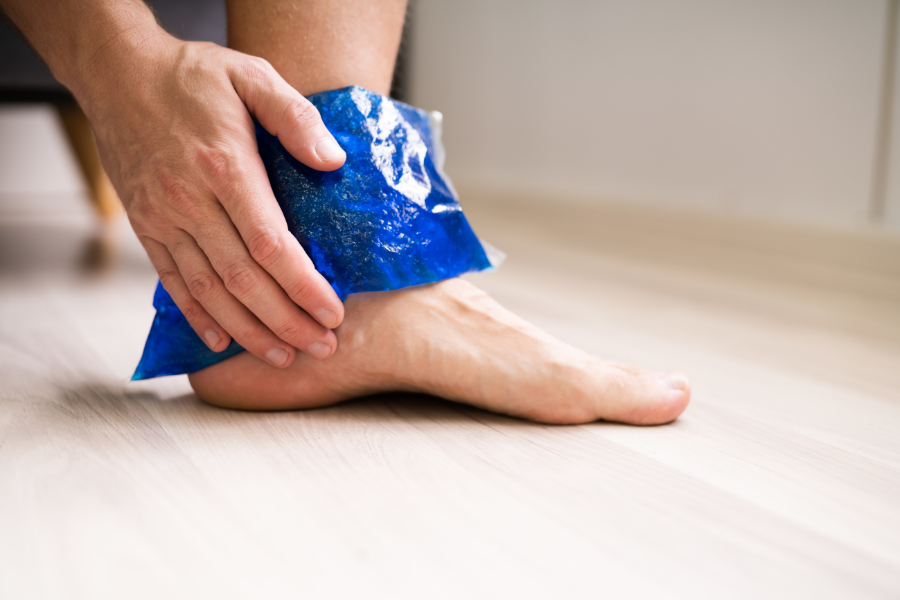Did I get hurt because I'm getting older?
- mtsablank
- Oct 24
- 3 min read
I commonly get this question from my patients their first visit - did I get hurt because I'm getting older? I get it from patients of all ages, from college kids in their early 20s, to my patients in their late 80s. When their pain starts seemingly out of nowhere, I often find they will justify this mysterious onset with, “Maybe I’m just getting old.”
The most common onset of injury we see at MTS is…Unknown.
That’s right — you read that correctly. When beginning a plan of care, I always ask, “How did this <the injury> start?”

Most often, the response is something like, “It kind of happened out of nowhere.” No direct cause, no injury, fall, or hit. Just pain that seems to creep out of the ether. In the “biz,” we call this insidious onset.
In this article, I want to highlight three factors that often contribute to insidious onset. By understanding these, you can not only exonerate your body’s aging process as the main culprit but also gain perspective on actionable steps to restore balance and resilience.
1. Identifying the Hidden Variables Behind “Insidious Onset”
When we start dissecting the factors that contribute to “random” back or shoulder pain, one of the first things we look for are recent changes in your daily life. Anything within the last three to six months — no matter how small — could play a role.
These changes can range from the obvious (“I started training for a half marathon after not running for years”) to the subtle (“I switched pillows to a ‘better’ one, and now my neck hurts”).
The truth is that these changes aren’t inherently bad — they’re just different. Your body simply hasn’t adapted yet to the new stimulus. Over time, if enough of these small shifts accumulate, they can collectively reduce your body’s ability to recover efficiently.
---
2. The Cumulative Nature of Stress
Stress takes many forms — mental, emotional, physical, even existential. Fortunately/ unfortunately the body doesn’t distinguish between them. Whether it’s a tough week at work, emotional strain, or increased training volume, your system processes all of it as “stress.”
Sometimes patients come in after a major life event — the loss of a loved one, a stressful home or work environment, or even ongoing global or personal uncertainty — and their bodies begin to express that tension physically. While we don’t treat these events directly, they’re essential to recognize as contributing variables that affect the body’s tissue health and overall state.
---
3. Finding the Right Amount of Stress
Interestingly, we often choose certain types of stress to relieve others — for instance, going for a run to clear the mind. While this can be healthy, it also adds physical stress to the system.
Your body is constantly managing the balance between internal and external stressors, determining how much energy to spend on recovery and adaptation. The truth is, there’s a sweet spot where stress builds strength and resilience — too much leads to breakdown, and too little can make the system deconditioned and fragile.
While there isn’t yet a precise way to measure this balance, tools like heart rate variability (HRV), sleep quality, and general mood or body awareness can serve as indicators of whether you’re within your ideal recovery zone.
---
Bringing It All Together
As you can see, there are many variables that contribute to the sensations we experience in our bodies other than age. Understanding how these factors interact can help explain why pain may seem to appear “out of nowhere.”
When we fail to uncover these contributors, we risk defaulting to a disempowering narrative — “I’m just getting old.” While aging is inevitable, how our bodies adapt, recover, and respond to stress is highly modifiable.
In the next post, we’ll explore practical strategies for creating “stress stop-gaps” throughout your day and routines that enhance overall recovery — helping you build resilience from the inside out.

About the author: Dr. Alex Blank, PT, DPT, OCS, CFMT,
Alex is board certified as an orthopedic specialist and highly experienced in managing overuse injuries. He has extensive training in managing recreational and competitive athletes so that they can continue to participate in the activities they love!
Disclaimer: This blog post is for informational purposes only and does not substitute for professional medical advice. Please consult with a qualified healthcare professional for personalized guidance.
.png)



Comments